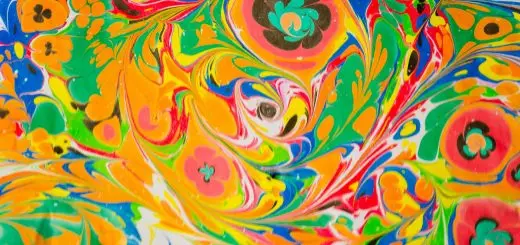How to Make Your New Year’s Eve Toast Unforgettable

Looking for more amazing products? Check out our online store and explore our collection here! Happy shopping!
Before diving in, please note: This post is for informational purposes only. If you’d like to know more about how we approach topics, feel free to check out our friendly Disclaimer Page.
Hey there, amazing readers! 
We’re committed to delivering quality posts, and your support (even just sticking around despite the ads) means everything to us. So, bear with us, and thanks for helping us keep the good vibes rolling. Now, on to the fun stuff!
TRANSLATE BUTTON AT THE END OF THE ARTICLE
A Quick Overview
As New Year’s Eve approaches, many of us start thinking about how to ring in the new year with style.
For some, that involves fireworks, dancing, and feasting, while for others, it’s about raising a glass and making a toast.
Crafting a memorable toast can turn a simple gathering into a cherished moment, leaving a lasting impression on your friends and loved ones.
Whether you’re celebrating with family, friends, or colleagues, I’m here to guide you through the process of creating an unforgettable New Year’s Eve toast.
Setting the Stage: Creating the Perfect Atmosphere
The atmosphere plays a crucial role in how your toast is received.
First, consider the venue.
Is it a cozy home setting or a lavish event space?
Lighting can set the mood; dim lights create intimacy, while bright lights can energize the room.
Choose a spot where everyone can see and hear you clearly.
Next, consider the sounds around you.
Soft background music can enhance the ambiance without overpowering your voice.
Choose songs that evoke nostalgia or joy, creating a fitting backdrop to your words.
Then, think about the timing.
Make sure your toast comes at a moment that feels right—perhaps right before the countdown to midnight or after a memorable meal.
You want your audience to be engaged, not distracted by other activities.
Don’t forget about the visual elements.
If you’re using props like sparklers or confetti, think about how they can enhance your message.
A visual aid can make your toast more engaging and memorable.
Lastly, your own energy matters.
Stand tall, project confidence, and let your enthusiasm shine through.
If you’re excited, your audience will also feel that excitement, making for a more unforgettable experience.
Gather Your Thoughts: Planning Your Toast Ahead
A well-thought-out toast is a powerful one.
Before the big day, jot down ideas that come to mind about the past year.
Reflect on what you want to convey.
Perhaps you want to celebrate achievements or share hopes for the upcoming year.
Create an outline.
I often start with an introduction, then move onto stories, and finish with wishes for the future.
Having a structure helps keep your thoughts organized.
Consider the length of your toast.
Aim for around two to three minutes.
It’s long enough to convey your message yet short enough to hold attention.
Draft a few key points that you want to touch on.
This could include personal anecdotes or collective experiences shared with the group.
The more relatable, the better.
Finally, don’t hesitate to revise your toast.
Write a few drafts and read them aloud.
This process helps refine your message and keeps you focused on what’s most important.
Personal Touch: Adding Meaningful Stories and Memories
Stories stick with people.
They add a personal touch that makes your toast resonate.
Think back on the past year—what moments stood out?
Maybe there was a vacation that brought everyone closer or a challenge that you all overcame together.
When sharing a story, aim for one that highlights shared experiences.
Perhaps recounting a funny incident or a heartwarming moment can evoke laughter or tears.
Details matter.
Paint a vivid picture with your words.
Instead of saying, "We had a great time," describe the laughter, the food, and the atmosphere that made the day special.
Moreover, consider including others in your stories.
Mention specific individuals and their contributions.
It makes people feel valued and recognized.
A memorable toast often includes lessons learned.
What insights did this past year bring?
Sharing your growth or realizations can inspire others.
Humor is Key: Lightening the Mood with Jokes
A little humor can go a long way in making your toast memorable.
A well-placed joke can ease tension and make your audience feel at ease.
But remember, humor should be light and inclusive.
Avoid inside jokes that not everyone will understand.
Self-deprecating humor works wonders.
If you can poke fun at yourself, it shows humility and can be endearing.
For example, I might joke about my attempts to cook a New Year’s dinner that ended in disaster, bringing a smile to everyone’s face.
Consider using funny anecdotes tied to your experiences over the past year.
Perhaps a mishap while traveling or a comedic family gathering.
Timing is essential.
A pause after a joke gives your audience a moment to react.
Keep it appropriate.
Know your audience, and steer clear of controversial topics that might offend.
Lastly, practice your delivery.
The way you tell it can make all the difference.
Heartfelt Wishes: Expressing Genuine Gratitude
While laughter is important, heartfelt words can have a profound impact too.
Start by expressing gratitude to those around you.
Thank them for their support, friendship, or love throughout the year.
Acknowledge the shared experiences that have brought you all together.
This could be as simple as saying, "I’m grateful for our friendship and the memories we’ve created this year."
Make your wishes for the future meaningful.
Instead of generic wishes, tailor them to the group.
Perhaps you could wish for continued success in personal and professional lives, or simply for happiness in the coming year.
Share your hopes for the upcoming year, and encourage others to reflect on their dreams and aspirations.
End this segment with a call to action—something like, “Let’s make the next year even better!” This can rally your audience and create a sense of unity.
Engaging the Crowd: Making Eye Contact and Smiling
Engagement is key in delivering any toast.
I’ve found that making eye contact creates a connection with your audience.
It shows confidence and sincerity.
Look around the room, making brief eye contact with different individuals as you speak.
A warm smile can transform your words.
It invites others to share in your joy and enthusiasm.
Encourage participation.
Phrases like “raise your glass” can help pull everyone into the moment.
Be aware of body language.
Stand confidently, use hand gestures to emphasize points, and ensure your posture is open and inviting.
Read the room.
If your audience seems restless, it may be time to speed up your delivery.
Lastly, share a laugh with your audience.
If something funny happens, don’t ignore it.
Acknowledge it and use it to your advantage.
Keep It Short: The Art of Brevity in Toasts
When it comes to toasts, less truly can be more.
No one wants to sit through a lengthy monologue.
Aim for brevity while still getting your message across.
Focus on key points.
What do you really want to say?
Eliminate unnecessary filler and stick to your core ideas.
Practice makes perfect.
Rehearse to find the right length.
You can even time yourself to make sure you stay within the two to three-minute range.
Use concise sentences.
Clear, straightforward language keeps your audience engaged and ensures your message is understood.
Remember the power of pauses.
They give your audience time to absorb what you’ve said and can add impact to your key points.
If you feel tempted to ramble, consider writing your toast down and sticking to it.
Use a Catchy Opening: Hooking Your Audience Instantly
First impressions matter, and your opening sets the tone for your entire toast.
Start with an attention-grabbing statement or question.
Something like, “Who here believes that this year has been one for the books?” can pique curiosity.
You might also consider opening with a quote that resonates with the New Year theme.
A well-chosen quote can immediately connect with your audience.
Personal experiences can also make a great opening.
A brief story that ties into your toast can captivate listeners right away.
Curiosity is key.
Give your audience a reason to listen.
You might say something unexpected or intriguing to draw them in.
Avoid clichés.
Instead of the usual “Happy New Year,” try something unique that reflects your style.
Incorporate Quotes: Wisdom from Famous Figures
Including quotes can add depth to your toast.
Quotes from well-known figures can resonate with your audience and bring your message to life.
Choose quotes that relate to themes of renewal, hope, and reflection.
For instance, a quote like "Cheers to a new year and another chance for us to get it right" can fit perfectly.
Make sure to attribute the quote to its source.
It adds credibility and can provoke thoughts among your audience.
You can also share personal thoughts that build on the quote.
Make it relatable to the experiences shared during the past year or the aspirations for the year to come.
Quotes can serve as a bridge to your main message.
They can introduce your toast and tie your ideas together coherently.
Practice Makes Perfect: Rehearsing Your Delivery
Practice is where the magic happens.
I recommend rehearsing your toast several times leading up to the big day.
Stand in front of a mirror or record yourself.
Watch your body language, facial expressions, and pacing.
Consider how you sound, and make adjustments as necessary.
Try practicing in front of a friend or family member.
Get feedback on your content and delivery.
Sometimes an outside perspective can offer valuable insights.
Don’t be afraid to tweak your words if something doesn’t feel right.
Practice with your glass in hand.
This can help you get comfortable with the physical act of toasting.
Above all, remember that practice builds confidence.
The more comfortable you feel, the less likely you are to stumble during your speech.
Toasting Etiquette: Knowing When and How to Toast
Understanding the dos and don’ts of toasting can significantly enhance your experience.
Traditionally, the host usually leads the toast, but if it’s your time to speak, wait for a natural moment.
Raise your glass before starting your speech.
This invites others to join you, setting the stage for the toast.
When toasting with a group, avoid clinking glasses until after your speech.
Many people find this more respectful and less distracting.
Keep your toast positive.
It’s not the time to air grievances or bring up negative experiences.
End with a clear cue that the toast is concluding, such as “Cheers!” or “To new beginnings!”
Finally, make sure you take a sip after your toast.
It’s polite and shows appreciation for the moment you’ve created.
Ending on a High Note: A Memorable Conclusion
Just as your opening matters, so does your closing.
End your toast with a powerful statement that ties everything together.
Reiterate your main points, reminding everyone of the shared experiences and the optimism for the future.
Consider closing with a call to action.
Something like, “Let’s raise our glasses to a year filled with laughter, love, and unforgettable memories!” can energize the crowd.
A heartfelt wish can also serve as a beautiful conclusion.
Expressing your desires for happiness, success, or togetherness provides a warm ending.
Finally, don’t forget to smile.
A genuine smile can leave a lasting impression and create a sense of unity among your audience.
As you raise your glass one last time, bask in the moment.
Your toast has been a part of their New Year’s Eve experience, and you want it to be remembered fondly.
Conclusion
Crafting an unforgettable New Year’s Eve toast is all about preparation, sincerity, and engagement.
By setting the right atmosphere, planning your words, and adding personal touches, you create a memorable experience for everyone involved.
Remember to keep it light with humor, express your gratitude genuinely, and use quotes to add depth.
Practice will make your delivery smoother, while understanding toasting etiquette will ensure your message resonates.
So approach your toast with excitement, and let your words help usher in a new year filled with hope, joy, and connection.
Cheers!

The Enlightenment Journey is a remarkable collection of writings authored by a distinguished group of experts in the fields of spirituality, new age, and esoteric knowledge.
This anthology features a diverse assembly of well-experienced authors who bring their profound insights and credible perspectives to the forefront.
Each contributor possesses a wealth of knowledge and wisdom, making them authorities in their respective domains.
Together, they offer readers a transformative journey into the realms of spiritual growth, self-discovery, and esoteric enlightenment.
The Enlightenment Journey is a testament to the collective expertise of these luminaries, providing readers with a rich tapestry of ideas and information to illuminate their spiritual path.
Our Diverse Expertise
While our primary focus is on spirituality and esotericism, we are equally passionate about exploring a wide range of other topics and niches 

To ensure we provide the most accurate and valuable insights, we collaborate with trusted experts in their respective domains 
Our blog originally focused on spirituality and metaphysics, but we’ve since expanded to cover a wide range of niches. Don’t worry—we continue to publish a lot of articles on spirituality! Frequently visit our blog to explore our diverse content and stay tuned for more insightful reads.
Hey there, amazing reader! 
Check out our store here and take a peek at some of our featured products below! Thanks for being awesome!










